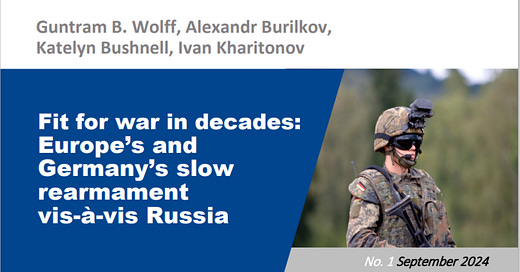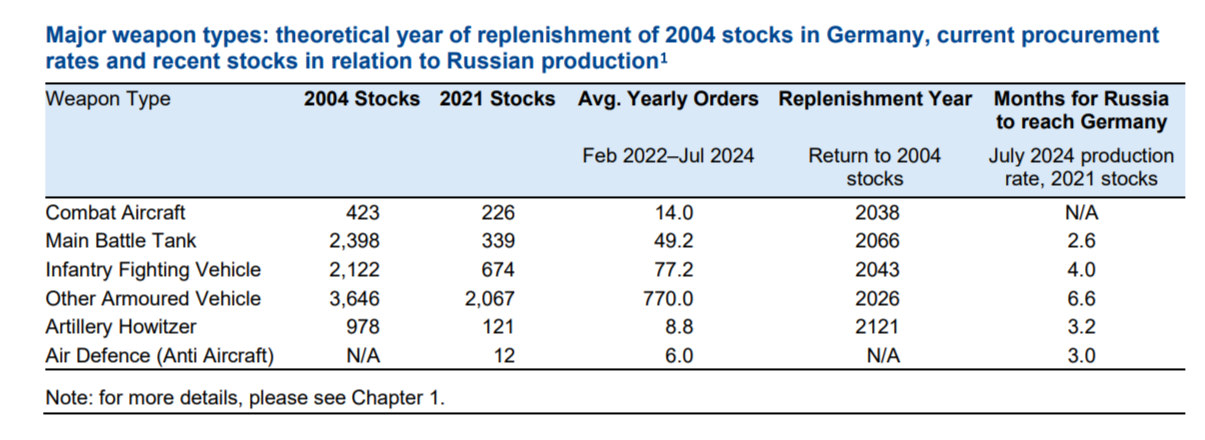This paid subscriber article covers the recent much-talked-about report from Germany’s Kiel Institute. It covers the most ‘viral’ takeaways which many have seen percolating through social media, but as is our style here, it also delves into the many other revealing bombshell facts which flew under the radar.
Some of the topics covered:
1. Russian tank manufacturing numbers finally revealed from an authoritative Western source.
2. The real, shockingly paltry Ukrainian air defense interception rates, as contrasted with the phony numbers regularly promoted by Zelensky’s presidential office.
3. Overall Russian military replenishment and force generation rates and how it will impact the near-term development of the conflict.
4. General outlook for the future given these findings.
This article is ~5,550 words in length, with ~750 of them open to the public as preview.
Last month, “Germany’s most influential” think-tank released an eye-opening report regarding Europe’s rearmament outlook as compared to that of Russia’s rapid military industrialization as seen over the past two years. The paper was done by the prestigious Kiel Institute, which is described as follows:
The Kiel Institute for the World Economy (Kiel Institut für Weltwirtschaft, or IfW Kiel) is an independent, non-profit economic research institute and think tank based in Kiel, Germany. In 2017, it was ranked as one of the top 50 most influential think tanks in the world and was also ranked in the top 15 in the world for economic policy specifically. German business newspaper, Handelsblatt, referred to the institute as "Germany's most influential economic think tank", while Die Welt, stated that "The best economists in the world are in Kiel" ("Die besten Volkswirte der Welt sitzen in Kiel")

Founded in 1914, it is both the oldest and most influential economic think-tank in Germany, and so its findings carry a particular weight when it comes to urgency of the situation.
First let’s read a portion of their abstract—pay particular attention to the highlighted opening sentence:
ABSTRACT: War is back in Europe and as it becomes long-lasting, the question of armament gains central importance. This report finds that Russian military industrial capacities have been rising strongly in the last two years, well beyond the levels of Russian material losses in Ukraine. Meanwhile, the build-up of German capacities is progressing slowly. We document Germany’s military procurement in a new Kiel Military Procurement Tracker and find that Germany did not meaningfully increase procurement in the one and a half years after February 2022, and only accelerated it in late 2023.
Given Germany’s massive disarmament in the last decades and the current procurement speed, we find that for some key weapon systems, Germany will not attain 2004 levels of armament for about 100 years. When taking into account arms commitments to Ukraine, some German capacities are even falling.
So right up front, we have two important statements which fly in the face of prevailing narratives on the “top surface” propaganda layer of the war discourse.
Russian military capacity is growing even way beyond the material losses in Ukraine.
Germany not only hasn’t expanded procurement, but in fact on some key systems it is experiencing a net loss in materiel.
For those who want a quicker summary of the chief findings, there is this article which essentializes those key points:
Namely, that Germany would take 100 years to rebuild its stocks to 2004-era levels:
Despite the rhetoric of a new era, the gap between Germany's and Russia's military capabilities continues to widen. At the current rate of procurement, it would take Germany up to almost 100 years to reach the military stocks of 20 years ago. This contrasts with the massive growth in Russian armaments capacities, including modern weapons systems, which produce the entire volume of German weapons stocks in just over six months.
And that key systems like air defense and M270s are being completely attrited, since they are hardly even manufactured at all and have been given to Ukraine hand-over-fist:
According to this, the German government is currently only just managing to replace the weapons flowing to Ukraine. The stock of air defense systems and mobile launchers (artillery howitzers) is even declining significantly. It was not until 2023, a good year after the Russian attack, that Germany even began to increase its defense spending to any significant extent and raise it above NATO's 2% target.
And:
The [Russian] production capacities are now so large that they can produce the entire stock of the Bundeswehr in just over six months. Since the attack on Ukraine, Russia has been able to significantly increase its production capacities for important weapons systems, for example doubling its production of long-range air defense systems and tripling its production of tanks.
But now let’s get down to the nuts and bolts, as some of the specific numbers revealed by this report are not only eye-opening but are some of the first high-level confirmations from reputable sources of Russia’s real production figures.
The report is long, at nearly 100 pages, but I will do my best to condense the most significant findings, particularly ones which have the biggest impact on not only the SMO but a potential future Russia-NATO clash.
Keep reading with a 7-day free trial
Subscribe to Simplicius's Garden of Knowledge to keep reading this post and get 7 days of free access to the full post archives.







